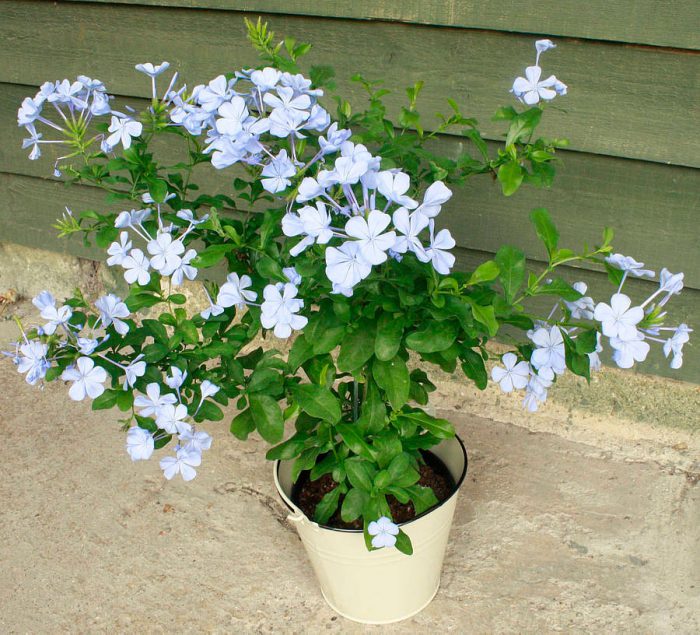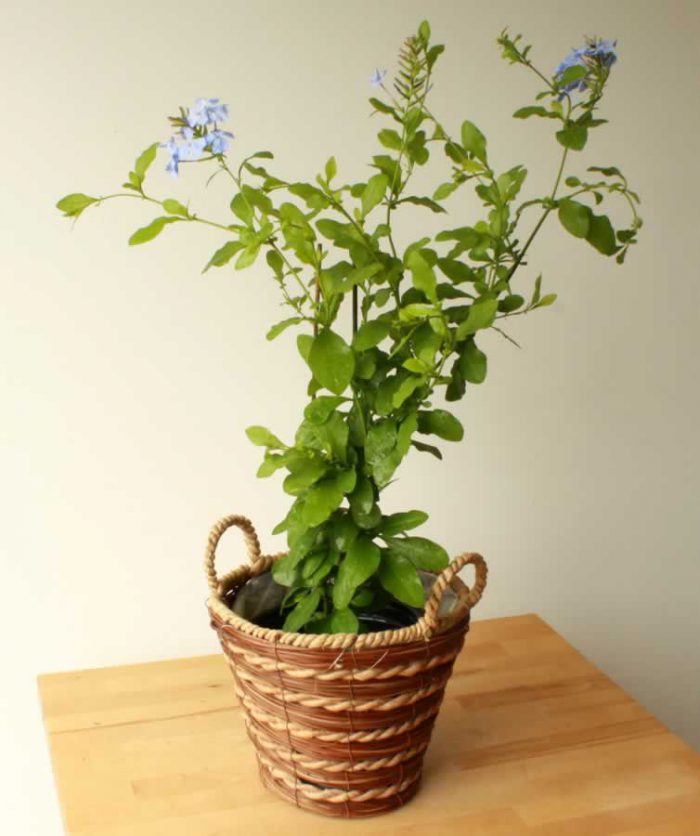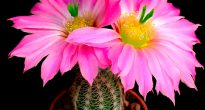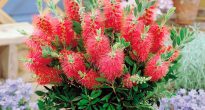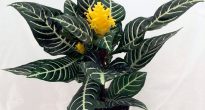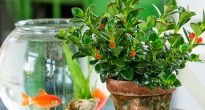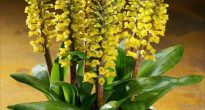Plumbago, or as it is also called the pig, is originally from South Africa. It can be found in the river valleys through shrub thickets, in the undergrowth of dry subtropical forests, in the lower belt, as well as in the foothills of the mountains.
The soil suitable for growing must be heavy. So, for the preparation of the soil mixture, it is necessary to combine leaf and sod land, peat, humus and sand, which should be taken in a ratio of 1: 2: 1: 1: 1.
At home, plumbago is grown as an ampelous plant. It is recommended to plant standard forms of such a plant, or grown in the form of a vine on a trellis, in the open ground in the summer. To create a trunk, you need to choose the strongest stem and tie it to a support, which should be located vertically (a stick that should be stuck into the soil is suitable). Then this stem must be cut to the desired height. The remaining weak stems must be cut. For 3 years (and maybe longer), a lush and very spectacular crown grows in the upper part of such a plant, which consists of long hanging or outstretched stems. In summer, they are almost completely covered with inflorescences with bluish flowers.
The genus plumbago unites about 10-12 different species, which are represented by dwarf shrubs, shrubs, and perennial herbaceous plants. At home, only 1 species is grown - the ear-shaped pig. Plumbago auricular, or P. Cape (Plumbago auriculata, or P. capensis) - this climbing beautifully flowering half-shrub has flexible, rather long liana-shaped or rod-shaped stems. The entire alternate leaves can be spatulate or lanceolate, short-petiolate or sessile. Their base is wedge-shaped, and the apex is obtuse. On the surface of the shoots and on the seamy side of the leaves, there is a layer of scaly hairs. In the place where the leaf is attached to the shoot, there are 2 small reniform stipules, which are very similar to ears. Flowering begins in early spring and ends only at the end of the summer period. At this time, at the ends of the stems, lush inflorescences in the form of umbrellas grow, which consist of snow-white or bluish flowers. On the surface of the flower calyx there is a layer of glandular sticky hairs. Spine-petal corolla from a thin long tube sharply transforms into a five-membered spike-shaped limb.
This flower can settle shield or spider mite.
Content
Home care
Illumination
He loves light very much, and you need it to be bright.
Temperature regime
In summer, experienced florists recommend moving such a flower outside (to the garden, to the balcony). In winter, it should be placed in a bright and cool room, where the air temperature will be from 6 to 10 degrees.
How to water
During intensive growth, watering should be abundant, and in the cold season - moderate.
Humidity
It does not need spraying, as it tolerates low air humidity well.
Transplant features
The transplant is carried out in the spring, while the stems should be shortened.
Reproduction
Can be propagated by cuttings. Cuttings quickly give roots in the sand, but bottom heating is needed.
If the leaves change color to brown, and flowering has stopped, then this is due to too scarce watering.

